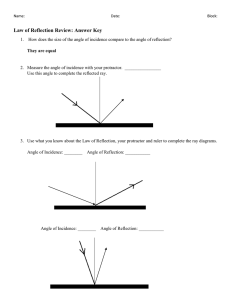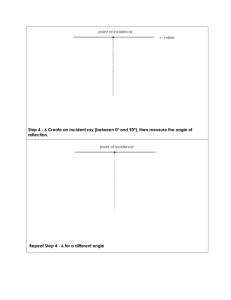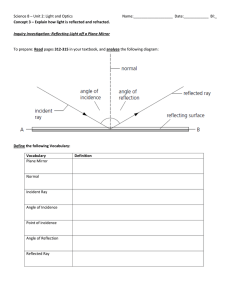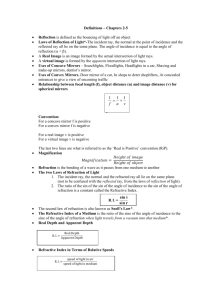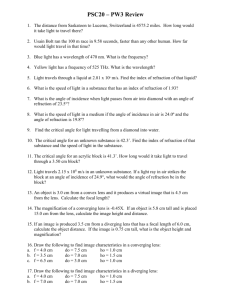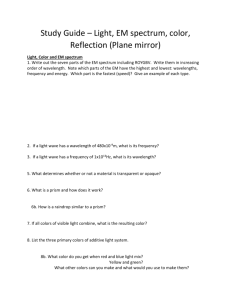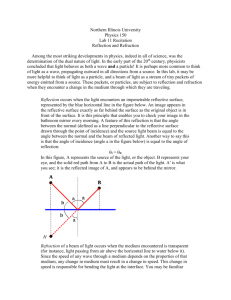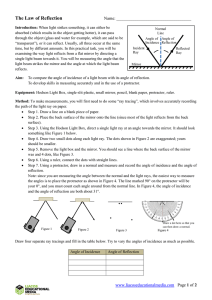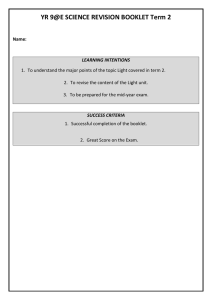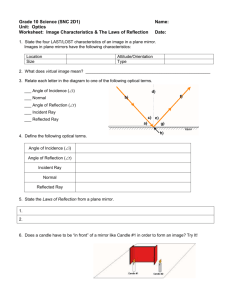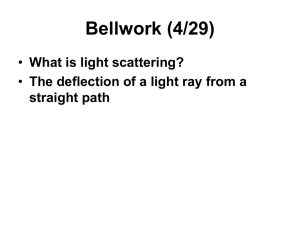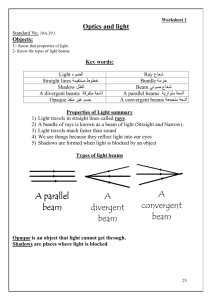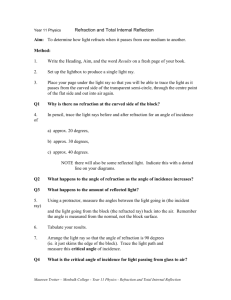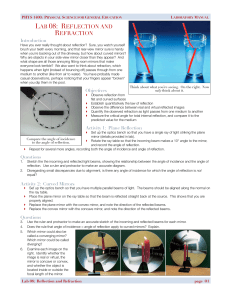Optics Unit Test Review
advertisement
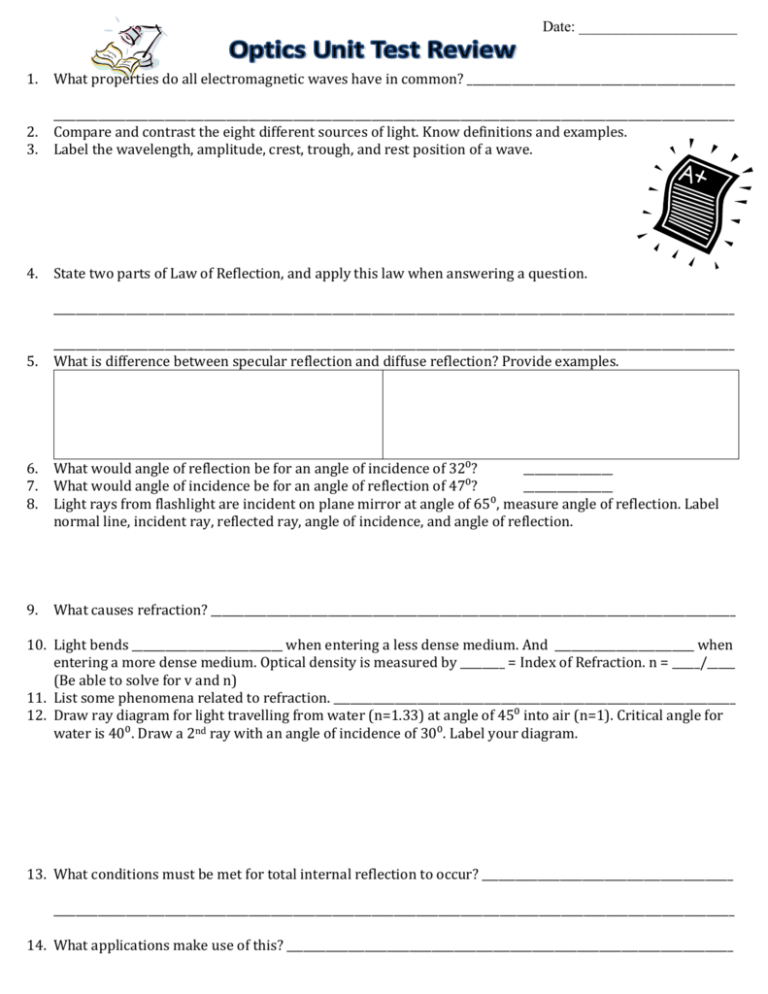
Date: _____________________ 1. What properties do all electromagnetic waves have in common? ________________________________________________ 2. 3. __________________________________________________________________________________________________________________________ Compare and contrast the eight different sources of light. Know definitions and examples. Label the wavelength, amplitude, crest, trough, and rest position of a wave. 4. State two parts of Law of Reflection, and apply this law when answering a question. __________________________________________________________________________________________________________________________ 5. __________________________________________________________________________________________________________________________ What is difference between specular reflection and diffuse reflection? Provide examples. 6. 7. 8. What would angle of reflection be for an angle of incidence of 32⁰? ________________ What would angle of incidence be for an angle of reflection of 47⁰? ________________ Light rays from flashlight are incident on plane mirror at angle of 65⁰, measure angle of reflection. Label normal line, incident ray, reflected ray, angle of incidence, and angle of reflection. 9. What causes refraction? ______________________________________________________________________________________________ 10. Light bends ___________________________ when entering a less dense medium. And _________________________ when entering a more dense medium. Optical density is measured by ________ = Index of Refraction. n = _____/_____ (Be able to solve for v and n) 11. List some phenomena related to refraction. ________________________________________________________________________ 12. Draw ray diagram for light travelling from water (n=1.33) at angle of 45⁰ into air (n=1). Critical angle for water is 40⁰. Draw a 2nd ray with an angle of incidence of 30⁰. Label your diagram. 13. What conditions must be met for total internal reflection to occur? _____________________________________________ __________________________________________________________________________________________________________________________ 14. What applications make use of this? ________________________________________________________________________________ 15. Compare and contrast converging and diverging lenses. What are some uses of each type of lens? 16. Why does a diverging lens never produce a real image? __________________________________________________________ 17. What happens to image as object moves closer to lens? __________________________________________________________ 18. 19. 20. 21. 22. Lens gets _________________ when looking at up-close objects, and __________________ when objects are far away. Be able to draw ray diagrams for converging lenses only and describe images using SALT. #2 pg 561. As n increases, focal length ________________________. As thickness increases, focal length _________________________ Label a diagram of human eye. Understand structure and function of each part. Describe five similarities between a camera and the human eye. 23. How is an image formed by the eye? Describe image found on retina. __________________________________________________________________________________________________________________________ __________________________________________________________________________________________________________________________ __________________________________________________________________________________________________________________________ 24. Compare and contrast far-sightedness and near-sightedness. What type of lens corrects each condition? 25. Compare and contrast concave and convex mirrors. What are some uses of each type of mirror? 26. You stand 1.8m in front of plane mirror. Use SALT to describe image. ___________________________________________ 27. Be able to draw ray diagrams for concave mirrors and describe images using SALT. #8 pg 501. ***Review your Notes, Homework, Labs, Quest Review, and Quest.


